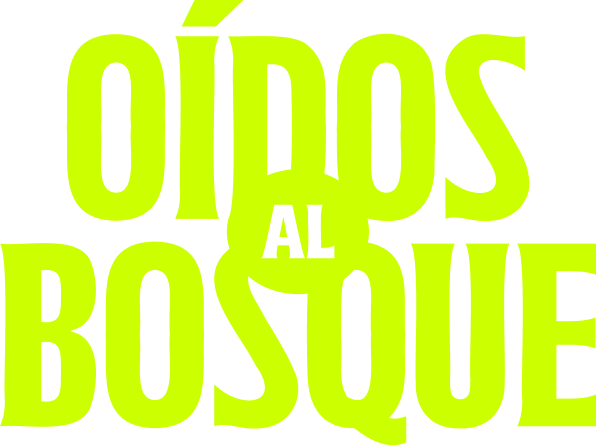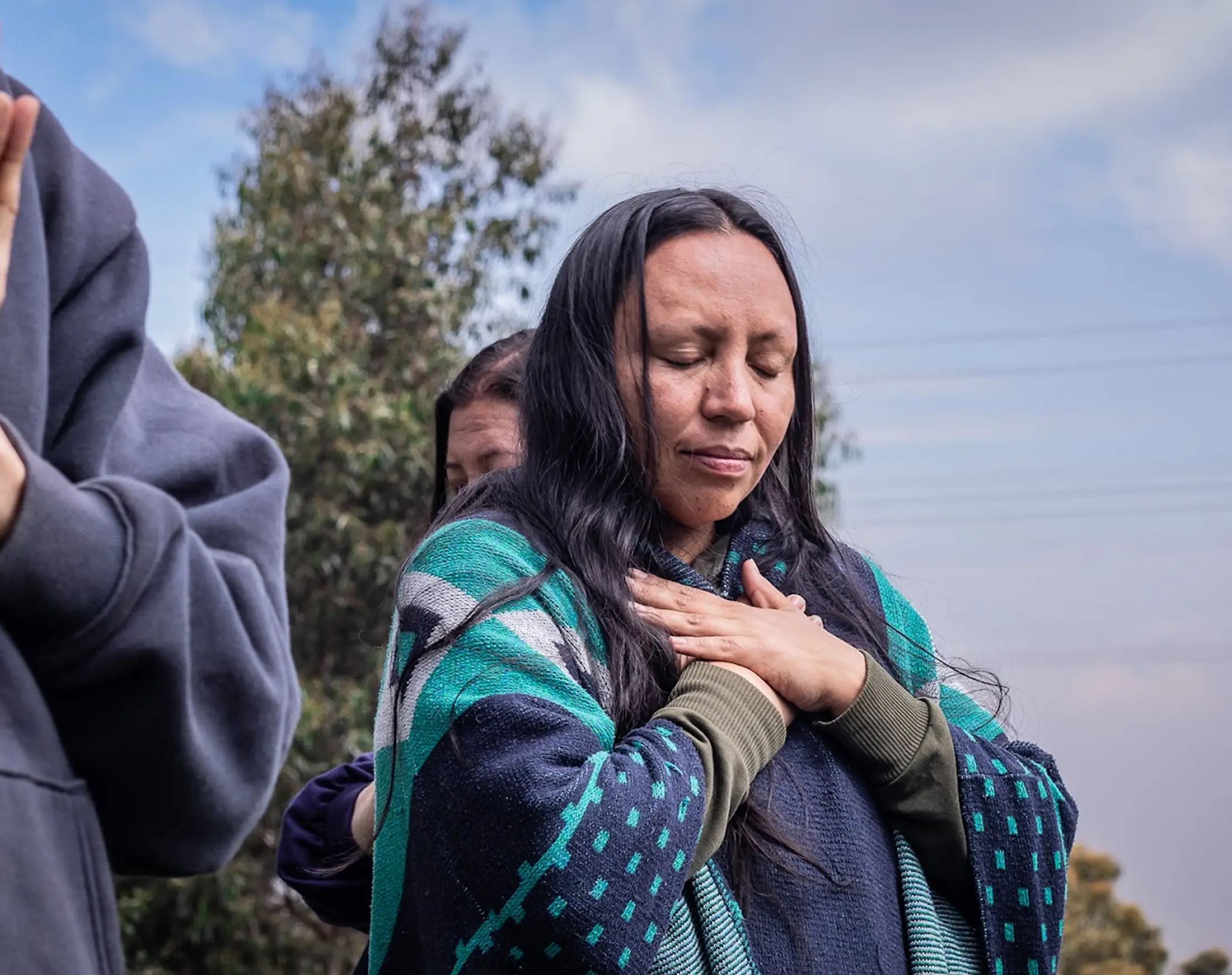

Communities on the outskirts of cities, where the countryside meets the pavement, live at a fragile crossroads. Once intimately connected to the rhythms of the Earth, they now face the growing influence of urban development, noise pollution, and fast-paced life. The new generations of these border communities risk losing their connection with the ground beneath their feet, forgetting the deep knowledge held by their landscape, and the intimate emotional connection we all have with it… just when the world needs it most.
Sound is a beautiful and effective way of strengthening that bond. We're more accustomed to seeing than hearing. But the truth is that our bodies perceive sounds even at the cellular level. It's also true that nature has its own voice. It screams and roars, but it also whispers. And often, its humblest of calls —a creak, a hum, a heartbeat —can be deafening and powerful for those who choose to listen with intent.


This is why Ears to the Forest was created: a project to connect Nature and young people from public schools in Bogotá's outskirts through deep listening, meditation, and the creative recording of natural sounds. The methodology consists of engaging students and their teachers in inspiring and fun workshops that raise awareness through action and a solid tutoring approach.
Ears to the Forest was born in 2025 when the United Nations Museum - UN Live invited the VozTerra collective, among several other global groups, to co-create innovative initiatives to connect us with the natural world. By 2020, Voz Terra was already working with a group of Colombian artists to compose sound works with Nature, through a revolutionary initiative: transforming natural sounds into royalties for Nature's own conservation. In 2024, together with the United Nations Museum - UN Live, the initial idea of VozTerra grew into the global Sounds Right alliance.
For VozTerra, protecting biodiversity through the creation of soundscapes is a concept as inspiring as it is valuable: this is the basic idea of Ears to the Forest.

Learning the delicate art of approaching the environment through our hearing is a multi-step process. It involves not only taking careful note of what Nature is telling us (by recording it), but also connecting with it through deep listening and meditation, in order to understand that it's not just about us and Nature, but about us as part of Nature.
For the ambitious Ears to the Forest Project, VozTerra designed four detailed tutorials, which were then put into practice through workshops with a network of 23 enthusiastic teachers from 12 rural schools in Bogotá. The workshops were delivered to students over a period of six weeks between May and June 2025. A total of 982 students ages 10 to 18 participated in the activities. You can listen to a selection of 40 of these audios, along with images and texts created by students from the rural schools who participated in the project.
Committed Trainers
The 12 schools participating in Ears to the Forest have between 350 to 2,000 students across their various locations on the outskirts of Bogotá. All are located in cold climates, some as high as 3,600 meters above sea level. Some overlook the highland moorlands known as paramos, so characteristic of the Colombian Andes. Others sit on green pastures; still others face the proximity of landfills or quarries. But they all share a strong interest in environmental preservation, safeguarding paramo ecosystems and other sources where water is dwindling, by caring for native forests, and planting trees.The workshops delivered the initial source of inspiration, leading teachers to provide context for their classrooms as well as an opportunity to create other activities to reconnect with the natural world.
The project's inaugural event took place at the Gabo School, which opened its doors for an in-person workshop with the 23 participating teachers. The methodologies developed by VozTerra were shared, and the topics of the four workshops were presented: meditation with nature, recognition of the soundscape, active listening, and recording soundscapes with accessible tools. This was a space for greeting and inspiration; a meeting that launched the collective process of Ears to the Forest.
Professor Mauricio Pedraza, principal of the rural Mochuelo Alto-CED school, acted as the project's pedagogical advisor, stressing the ancestral indigenous concept of asking permission and protection from Mother Earth to interact with her creatures.
Teachers' Testimonials
“As a teacher, the Ears to the Forest process allowed me to discover, in the silence, a strong strategy to expand my own listening [...] it is the powerful sound that emerges from the mountains and rural Bogotá.”
Iván Rojas, San Cayetano School
One day we traded a chemistry masterclass for a guided meditation session with the sounds of Nature [...] it was an invaluable experience, one that is difficult to put into words.
Yenny Lucero González Castellanos, San Cayetano School
Connecting with Ears to the Forest amplified the sonority of the living world [...] to grow, flow, pause, create, and to reason in the company of others.
Patty Sánchez, Gloria Valencia de Castaño School
Ears to the Forest is part of Sounds Right, an initiative of the United Nations Museum - UN Live and partners like VozTerra that allows Nature to generate royalties and funding from its own sounds.
The Ears to the Forest project was funded by the Udenrigsministeriet (Danish Ministry of Foreign Affairs) and the Museum for the United United Nations -Live.





